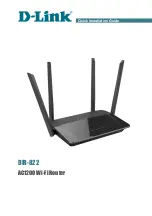
If a client that does not support 802.1X is connected to an unauthorized 802.1X port, the switch requests the
client's identity. In this situation, the client does not respond to the request, the port remains in the unauthorized
state, and the client is not granted access to the network.
In contrast, when an 802.1X-enabled client connects to a port that is not running the 802.1X protocol, the client
initiates the authentication process by sending the EAPOL-start frame. When no response is received, the client
sends the request for a fixed number of times. Because no response is received, the client begins sending frames
as if the port is in the authorized state
If the client is successfully authenticated (receives an Accept frame from the authentication server), the port state
changes to authorized, and all frames from the authenticated client are allowed through the port. If the
authentication fails, the port remains in the unauthorized state, but authentication can be retried. If the
authentication server cannot be reached, the switch can retransmit the request. If no response is received from
the server after the specified number of attempts, authentication fails, and network access is not granted.
When a client logs off, it sends an EAPOL-logoff message, causing the switch port to transition to the
unauthorized state.
If the link state of a port transitions from up to down, or if an EAPOL-logoff frame is received, the port returns to the
unauthorized state.
















































